I know what you’re thinking, again with the SMS transport talk Nick? Ha! As if we’re done talking about SMS. Recently we did something kinda cool – The world’s first SMS sent over NB-IoT (Satellite).
But to do this, we weren’t using IMS, it’s too heavy (I’ve written about NB-IoT’s NIDD functions and the past).
SGs-AP which is used for CSFB & SMS doesn’t span network borders (you can’t roam with SGs-AP), and with SMSoIP out of the question, that gave us the option of MAP or Diameter, so we picked Diameter.
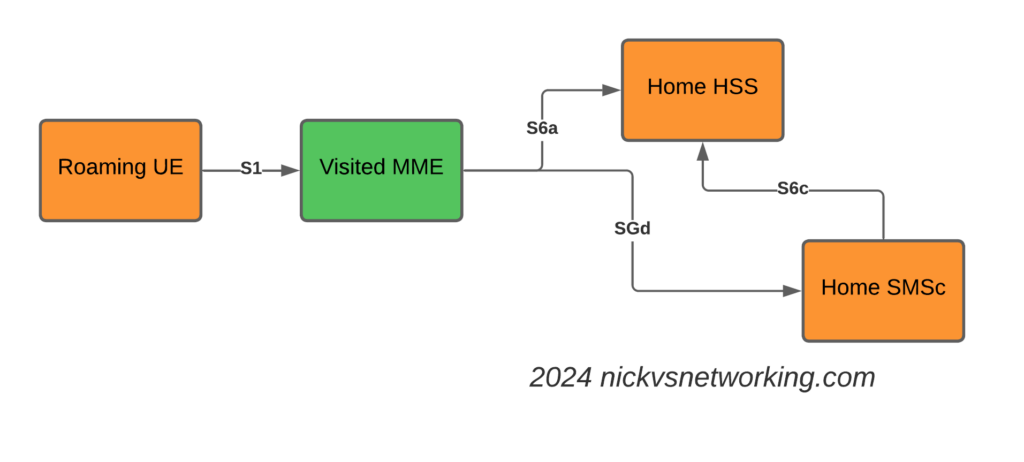
This introduces the S6c and SGd Diameter interfaces, in the diagrams below Orange is the Home Network (HPMN) and the Green is the Visited Network (VPMN).
The S6c interface is used between the SMSc and the HSS, in order to retrieve the routing information. This like the SRI-for-SM in MAP.
The SGd interface is used between the MME serving the UE and the SMSc, and is used for actual delivery of the MO/MT messages.
I haven’t shown the Diameter Routing Agents in these diagrams, but in reality there would be a DRA on the VPLMN and a DRA on the HPMN, and probably a DRA in the IPX between them too.
The Attach
The attach looks like a regular roaming attach, the MME in the Visited PMN sends an Update Location Request to the HSS, so the HSS knows the MME that is serving the subscriber.
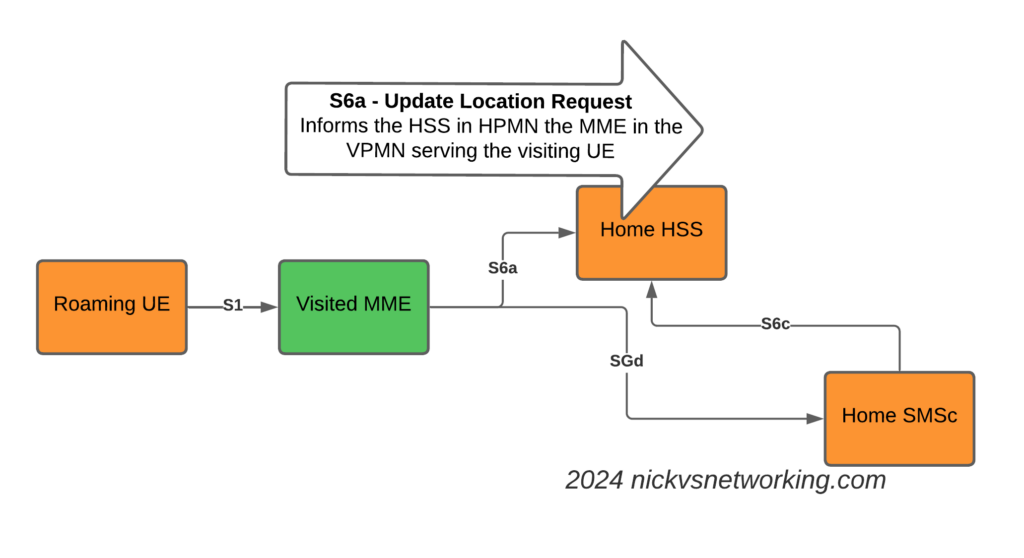
The Mobile Terminated SMS Flow
Now we introduce the S6c interface and the SGd interfaces.
When the Home SMSc has a message to send to the subscriber (Mobile Terminated SMS) it runs a the Send-Routing-Info-for-SM-Request (SRR) dialog to the HSS.
The Send-Routing-Info-for-SM-Answer (SRA) back from the HSS contains the info on the MME Diameter Host name and Diameter Realm serving the subscriber.
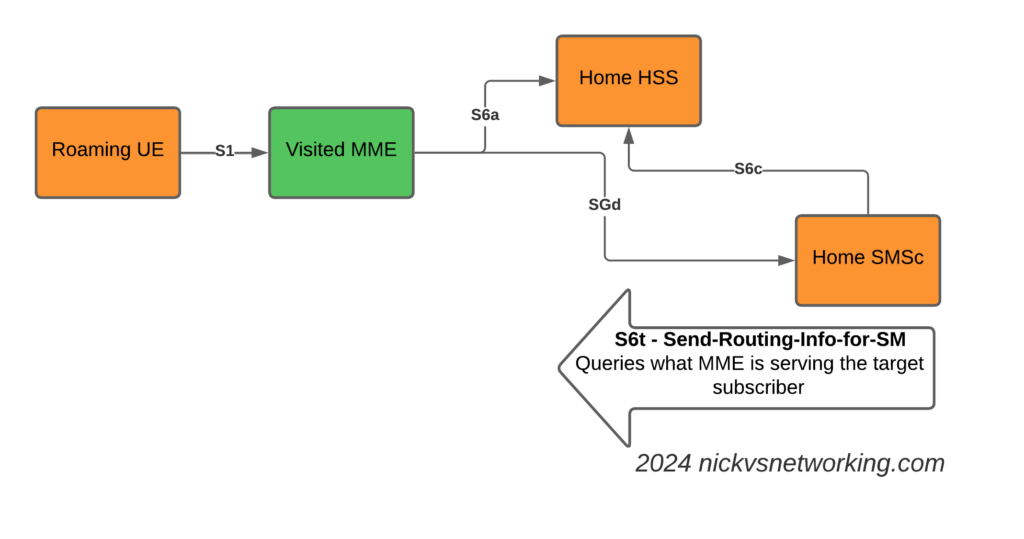
With this info, we can now craft a Diameter Request that will get sent to the MME serving the subscriber, containing the SMS PDU to send to the UE.
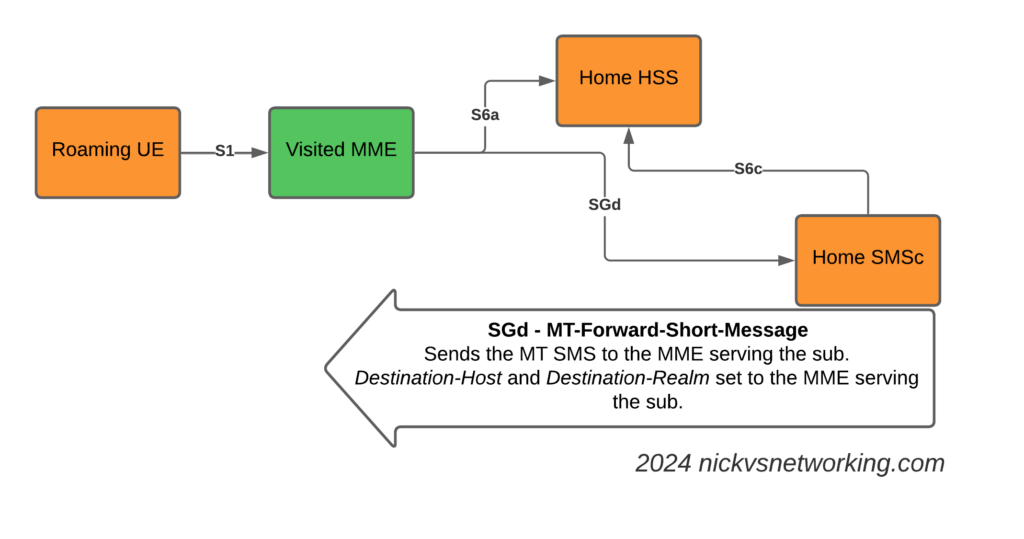
We make sure it’s sent to the correct MME by setting the Destination-Host and Destination-Realm in the Diameter request.
Here’s how the request looks from the SMSc towards our DRA:
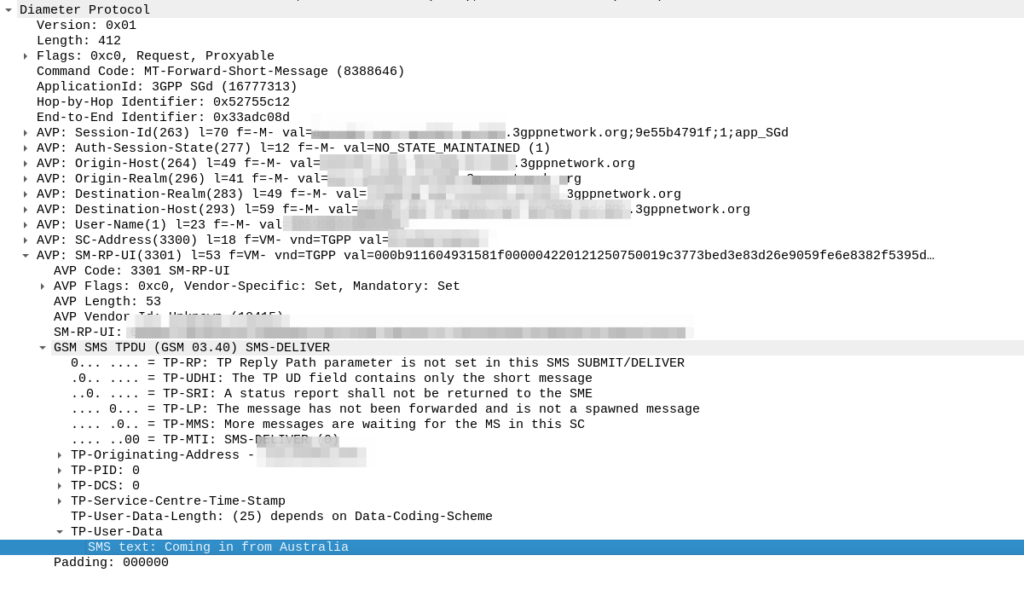
As you can see the Destination Realm and Destination-Host is set, as is the User-Name set to the IMSI of the UE we want to send the message to.
And down the bottom you can see the SMS-TPDU, the same as it’s been all the way back since GSM days.
The Mobile Originated SMS Flow
The Mobile Originated flow is even simpler, because we don’t need to look up where to route it to.
The MME receives the MO SMS from the UE, and shoves it into a Diameter message with Application ID set to SGd and Destination-Realm set to the HPMN Realm.
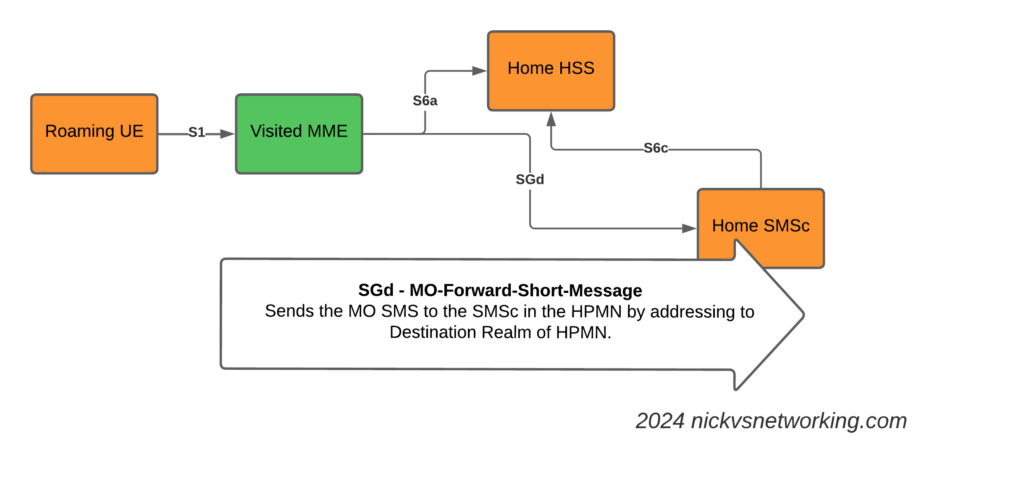
When the message reaches the DRA in the HPMN it forwards the request to an SMSc and then the Home SMSc has the message ready to roll.
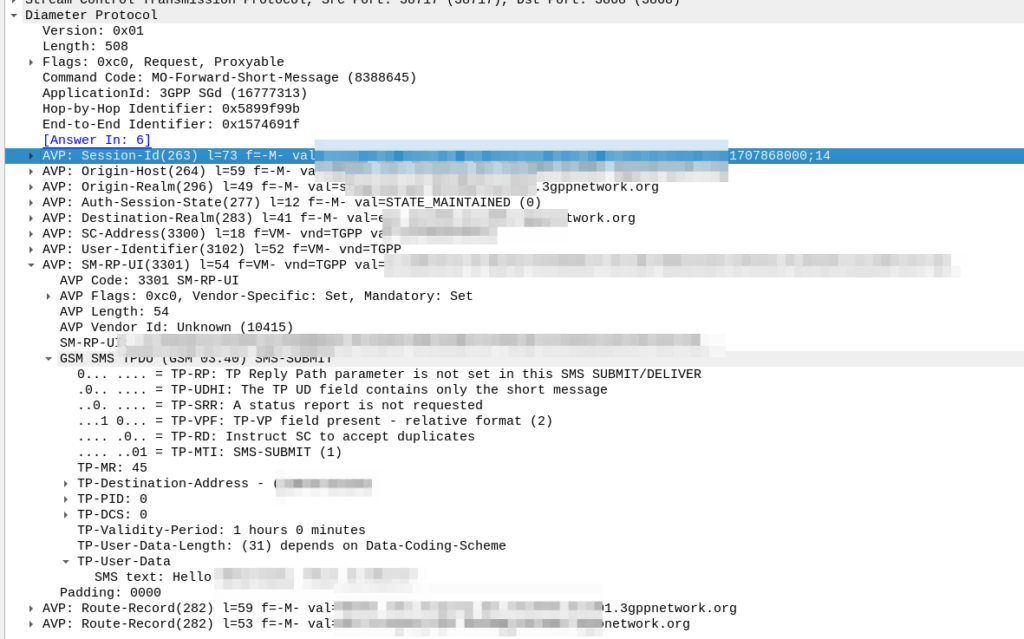
So that’s it, pretty straightforward to set up!
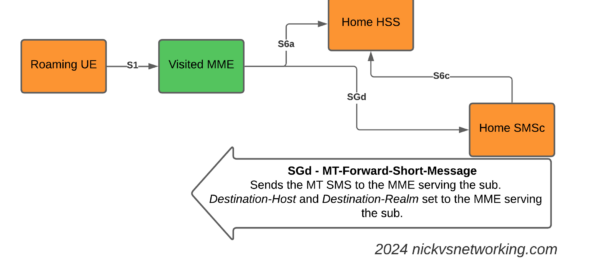
Nicely simplified info. I observed typo with MT SRR diagram. S6t indicated instead of S6c and the query should be along S6c path towards HSS. Thanks.
I have used this mechanism with an EPC core mostly due to the ubiquity of Diameter infrastructure in an EPC-based network.
Would be nice if the IPX providers would support it though better. They seem to have heard about it, they hate the MAP/SIGTRAN which they use every day, but they don’t want to pay themselves for translation gateways, hence waiting for the MNOs to force everyone into it.
Unfortunately, when doing this IRL and at scale, I believe that the S6c has some short-comings. The Alert-Request/Answer (IIRC), which is supposed to drain a queue of MT-SMSes when the device attaches, is hard to get just right. Would be interesting to see a 2nd part of this to cover that and mapping it to the triggering ULRs. Or maybe my/our issues were that we still had to translate to MAP/SIGTRAN (so delivery through MSC, because IPX and interconnect reasons) and that’s an old can of worms ;-).